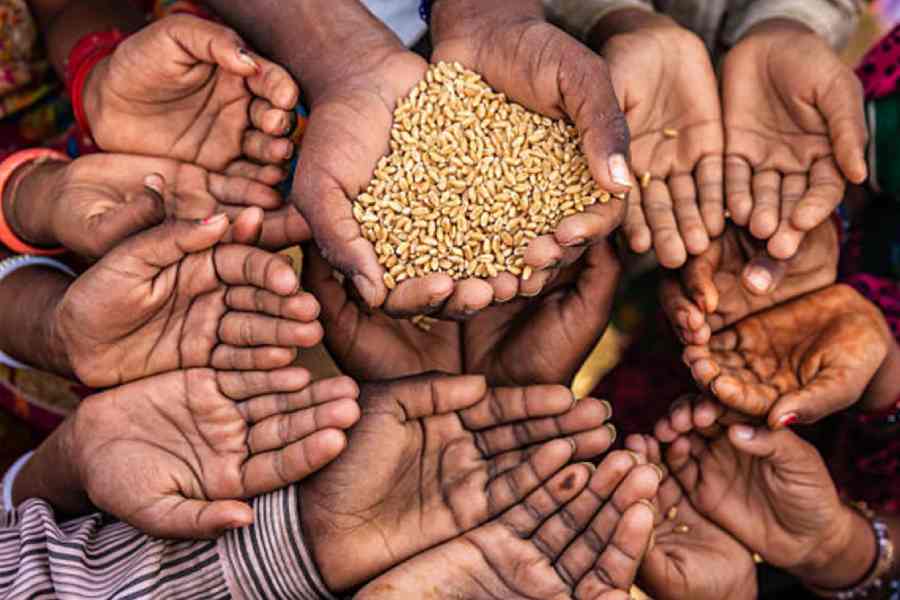The State of Food Security and Nutrition in the World report brought out by the Food and Agriculture Organization of the United Nations estimates that 70% of the Indian population was unable to afford a healthy diet in 2020. Out of the 1,331.5 million people in South Asia who were unable to afford a healthy diet in 2020, 973.3 million resided in India. India has “a level of hunger that is serious,” stated the Global Hunger Index 2022. The health crisis, induced by the coronavirus and the attendant economic downturn, has worsened the state of food security in the country.
A meagre five kilogrammes of free grains per person a month was touted as one of the major components of the relief packages announced in the wake of the pandemic. But field evidence from various parts of India established that subsidised and free rations provided through the public distribution system acted as a cushion against starvation. As part of the PDS, the Food Corporation of India and the state governments procure food — mainly rice and wheat — at minimum support prices. This is then distributed at subsidised rates as per the mandate of the National Food Security Act, 2013. The difference in the cost of procurement, storage and distribution of the grain and the price at which they are distributed constitute the food subsidy. Food subsidies are often projected as an unnecessary expenditure on Central finances and are blamed for the weak fiscal position of the economy. It is thus worthwhile to take stock of the numbers presented in the latest Union budget with respect to expenditures on food subsidy.
The total budget for food subsidy in 2023-24 has been pegged at 1.97 lakh crore, around 5% less than that of last year. Given that revised estimates for 2022-23 are around 38% higher than the budgeted expenditure for 2022-23, the reduction in budget estimates this year is counterintuitive. This budget estimates the spending on food subsidy to be less than 5% of total government expenditure. The share of expenditure budgeted for food subsidy as a proportion of the total budgeted expenditure has gone down from 5.24% in 2022-23 to 4.38% in 2023-24.
In 2020-21, a sudden release of funds towards payment to the FCI over and above the budgeted allocations resulted in an increase in the Centre’s food subsidy bill for that year. In the popular perception, the increase in the subsidy bill was linked to the higher allocation of food grains under the Pradhan Mantri Garib Kalyan Yojana, which was announced in March 2020. However, a more compelling reason behind the spike can be found in the financial accounts of the FCI. As a result of inadequate government transfers over successive years, the FCI’s borrowings went up steeply, peaking at rupees 3.28 lakh crore in 2019-20, around 78% of this amount was borrowed from the National Small Savings Fund at an interest rate of around 8% per annum. In 2020-21, the government released an additional 4.32 lakh crore as food subsidy. During this year, the FCI’s borrowings went down, indicating that the majority of the increased expenditure towards food subsidy was actually used in paying off the FCI’s accumulated debt.
Expenditures on food subsidy are on the decline. The share of food subsidy in total expenditure in the budgeted estimates for 2023-24 has slipped. Reduction in the budgeted food subsidy at this critical juncture is worrying. A lower estimated expenditure will not be sufficient to meet the greater public demand for food grains.










